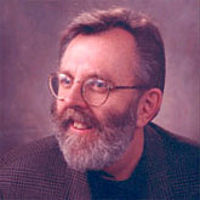2008 Richard C. Tees Distinguished Leadership Award Winner: Dr. Melvyn Goodale

Mel Goodale has made significant and substantive leadership contributions for each of the criteria listed for the Tees Award:
Advancement and administration of the Canadian Society for Brain, Behavior, and Cognitive Science.
Most notably, Mel was a key player in the formation of CSBBCS. Mel was the Chair of the Scientific Affairs Committee of the Canadian Psychological Association (CPA) in the late 1980s, when the NSERC-funded researchers in psychology across Canada were feeling more and more alienated from the CPA, which was becoming increasingly dominated by clinical psychology. Together with Ray Klein and others, he helped to found a new organization which was intended to represent the interests of the community more directly. That organization was to become CSBBCS. The new society held its first meeting at the University of Calgary in 1990. Kim Shapiro was the local organizer and Mel was elected the first president of CSBBCS.
Contributions to the training of students and technical staff in psychology both at one's own institution and nationwide.
Mel Goodale has trained a very large number of researchers who now hold positions in Psychology (and related disciplines) throughout Canada and abroad. As a former postdoctoral trainee of Mel’s, I can attest to the outstanding quality of his supervision and mentorship. Mel has a knack for picking out “rising stars” and “diamonds in the rough” and guiding them to successful careers. His supervisory style is one which provides incisive and insightful feedback with tremendous creativity and enthusiasm for science. Mel gives his trainees enough freedom to follow their own directions while providing a spectacular research environment and valuable guidance in asking “the right questions.” His past trainees speak incredibly highly of Mel. Indeed when I was considering applying to work in his lab, I spoke with approximately a dozen of his then-current and former trainees, all of whom unequivocally raved about how much they enjoyed working with him. Mel’s mentorship doesn’t end when trainees leave his lab. He is widely successful in getting them placed in excellent academic positions and in being an advocate for them as they establish their own careers.
Advancement of research and scholarship by involvement with granting agencies that fund research concerning brain, behaviour, and cognition.
Mel has been actively involved with all the major funding bodies in Canada. For example, within the past five years alone, he has chaired the Group Grants Selection Committee and later the Research Resources Grant Selection Committee at the Canadian Institutes for Health Research (CIHR), as well as serving as a member on Canadian Foundation for Innovation (CFI) Reverse Site-Visit Team, the CIHR Behavioural Sciences (C) Grant Selection Committee, the Natural Sciences and Engineering Research Council (NSERC) Steacie Fellowship Selection Committee, and the Early Researcher Award Committee for the Ontario Ministry of Research and Innovation.
Most recently, Mel has been a major player in the formation of C-BRAIN (Canadian Brain Imaging Network), a network of neuroimaging scientists across the country who have realized that rather than compete against each other for a very limited pool of grant funds, they should join forces to lobby the governments and granting agencies to develop funding programs that will support the large costs of infrastructure and operation of neuroimaging facilities such that they do not compromise the limited pool of funds available to the general Psychology and BBCS community.
Contributions to Canadian journals of psychology.
For a number of years in the late 1990’s, Mel served on the editorial board of the Canadian Journal of Experimental Psychology.
Advancement of research and scholarship by basic and applied scientific contributions to the discipline.
Mel’s scientific contributions have been widely recognized by a not only by the Hebb Award but also by many awards from Western (Distinguished University Professor; Hellmuth Prize for Scientific Achievement; Pleva Award for Excellence in Teaching), his Tier 1 Canada Research Chair, his fellowship in the Royal Society of Canada, the Annual Book Award from the British Psychological Society, and many invitations to give prestigious lectures at other institutions. He publishes prodigiously (including two books, two edited books, and over 150 peer-reviewed manuscripts, many in high and top impact journals) and his work has had exceptional impact (with over 6,000 citations and an h-index of 40).
Mel has been a major player in building cognitive neuroscience in Canada, particularly at the University of Western Ontario. Shortly after the first papers on functional magnetic resonance imaging (fMRI) were published in 1992, Mel realized the technique’s potential as a powerful tool for understanding the relationship between brain and behavior, in conjunction with other techniques such as behavior and neuropsychology. He, together with Tutis Vilis and Brian Rutt, led the charge at Western and the affiliated Robarts Research Institute to hire Dr. Ravi Menon and develop a state-of-the-art fMRI facility with Canada’s first high-field (4 Tesla) scanner.
Among his many contributions, Mel has founded the CIHR Group on Action and Perception (GAP), which combined researchers from Western, York and the University of Toronto. The quality of the group is indicated by its #1 ranking in the CIHR Group Grants competition in both its original application and renewal. The group is now being expanded as the Canadian Action and Perception Network (CAPnet) to include additional researchers at Queen’s and York and again Mel is playing a pivotal role. Mel also founded the Centre for Brain and Mind at Western, beginning with the recruitment of a team of three neurophysiologists, continuing with the acquisition of two new fMRI scanners in 2008 (3 Tesla and 7 Tesla, the highest field strength available for human research in Canada), and ongoing with efforts to establish a physical site for the Centre for Brain and Mind. With respect to teaching, Mel and Tutis Vilis were founding members of the Graduate Program in Neuroscience at Western in 1991.
Many of these efforts have directly benefited others at Western and the Robarts; however, their impact will be felt much more broadly, particularly among graduate and postdoctoral trainees. For example, the Neuroscience program has produced 131 graduates since its inception and the GAP has trained 31 postdocs, the vast majority of whom have obtained faculty positions in Canada (16) or abroad (7) or have continued in research (8). Many of these former trainees speak very favorably about the research environment provided by GAP, with its excellent facilities and critical mass of researchers, all of which were made possible by Mel’s efforts.
Promotion of interaction between BBCS and other psychology organizations and direct service to the latter organizations.
During his role as Chair of the Scientific Affairs Committee of CPA during the initiation of BBCS, Mel was very sensitive to keeping the relationship between CPA and BBCS amicable.
Promotion of scientific and administrative collaborations that advance the causes of the scientific study of brain, behaviour, and cognition.
Mel has played many roles that have helped to put Canadian Psychology and Neuroscience on the map. He was the North American Representative for the International Neuropsychological Symposium throughout the 1990s. In addition, in 1999 he was President of the Association for the Scientific Study of Consciousness during which time he organized a meeting at Western. While at St. Andrews, Mel was one of the founding members of the European Neuroscience Association in 1975, the forerunner of what was to become the Federation of European Neurosciences.
In addition to his many collaborations within Canada, including GAP and CAPnet as well as with other individuals, Mel has established a network of worldwide collaborations, including the U.S., the U.K., the Netherlands, France, Italy, and Australia.
General Comments
Mel’s leadership style has several characteristics which I believe make it so successful. First, Mel leads not by Machiavellian political maneuvering but rather by developing a thoughtful vision of the future of Psychology and Neuroscience. He demonstrates such insight and boundless enthusiasm that both peers and administrators become excited to work with him to make things happen. Second, Mel has accomplished so much through his outstanding abilities to build teams of excellent contributors with complementary expertise and a willingness to work together for the common good. Third, Mel has a rare amount of optimism and resilience that allows him to keep going and to inspire others to keep going even when challenges arise. Together these characteristics make him a leader who is both highly valued and highly respected by those he leads.
In sum, given Mel’s role in establishing CSBBCS and acting as its first president, as well as his abundant contributions to Canadian science, scientists, granting agencies, and trainees, I believe Mel is an exceptional candidate most worthy of the Richard C. Tees Distinguished Leadership Award. I hope you will agree.
Jody Culham, Ph.D.
Associate Professor

